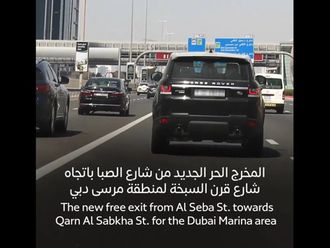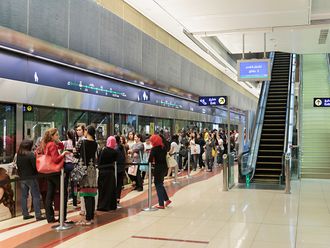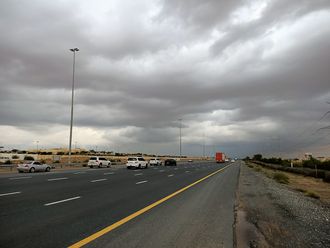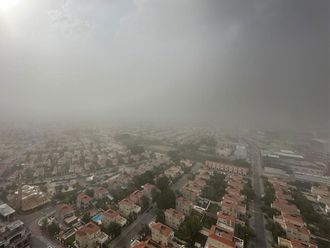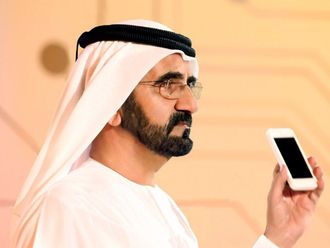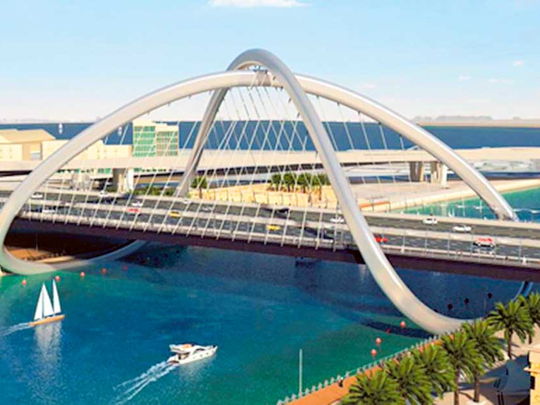
Dubai: Work on a 12-lane Shindagha bridge connecting the historic districts of Al Shindagha and Al Ras will begin in the first quarter of next year, Gulf News can confirm.
The crossing, which will be part of the 13-kilometre-long ring road called Shindagha Corridor, will boast an iconic design based on the concept of infinity.
Earlier this year, His Highness Shaikh Mohammad Bin Rashid Al Maktoum, Vice-President and Prime Minister of the UAE and Ruler of Dubai, approved the design of the Shindagha bridge, which is set to be one of the landmarks of Dubai.
According to a senior official at the Roads and Transport Authority (RTA), the design for the bridge was chosen after some of the world’s best architects were invited to present their concepts.
The bridge, which is expected to be 300 metres long and 22 metres wide, will eventually replace the 40-year-old Shindagha Tunnel that currently connects Al Ras in Deira and Al Shindagha in Bur Dubai. It will rise up to 15 metres high, letting dhows and yachts pass under it.
Shindagha tunnel is currently one of the busiest crossings on the Creek with more than 100,000 vehicles passing through it on an average daily.
The crossing is a vital link for thousands of residents and business people who live or work on either side of the historic business districts of Al Ras and Bur Dubai.
With only two lanes on each side, the tunnel has proved to be a bottleneck in the recent past, particularly during evening peak hours, when the traffic tails back several kilometres.
The new bridge and the corridor is expected to remove the bottleneck and double the capacity of the crossing.
Running all the way from Al Mamzar, at the far end of Deira, the Shindagha Corridor passes along Cairo Street, Al Khaleej Road, Meena Street and Shaikh Rashid Road, creating a 13-km-long expressway through some of the most congested parts of historic Dubai.
The project will see development of 15 intersections along the corridor, converting the signalised junctions into free-flowing flyovers and underpasses that will remove all traffic bottlenecks.
The corridor begins at the intersection between Cairo Street and Al Rasheed Street in Al Mamzar and ends at the intersection of Khalifa Street and Shaikh Rashid Road in Al Karama (Sana interchange).
Some of the key developments along the corridor include Al Mamzar bridge, Abu Hail bridge and the Sana interchange which will be part of different phases of the project.
The project is being carried out in three phases, with work on phase one already under way.
The Dh611 million phase one includes an eight-lane underpass, a four-lane flyover and an elevated exit transforming the Sana interchange. This phase is set to be ready by the end of next year.
The second phase, worth Dh3.8 billion, includes the development of all the intersections along the Shindagha Corridor from the Sana interchange to the point where Abu Hail Road meets Al Khaleej Road in Deira.
It also includes the bridge leading to Palm Deira from the south and Shindagha bridge. Work on this phase will start in the first quarter of 2017.
Work on the section between Abu Hail/Al Khaleej Road interchange to Al Mamzar interchange on Cairo Street will be part of the Dh668 million third phase. This phase will also include Al Mamzar and Abu Hail bridges.
According to the official, apart from the flyovers and underpasses, the project will also include the improvement of a number of local and service roads along the corridor.
Shindagha Corridor is surrounded by a number of mega development projects such as Palm Deira, Dubai Waterfront Development, Dubai Maritime City and Port Rashid.


